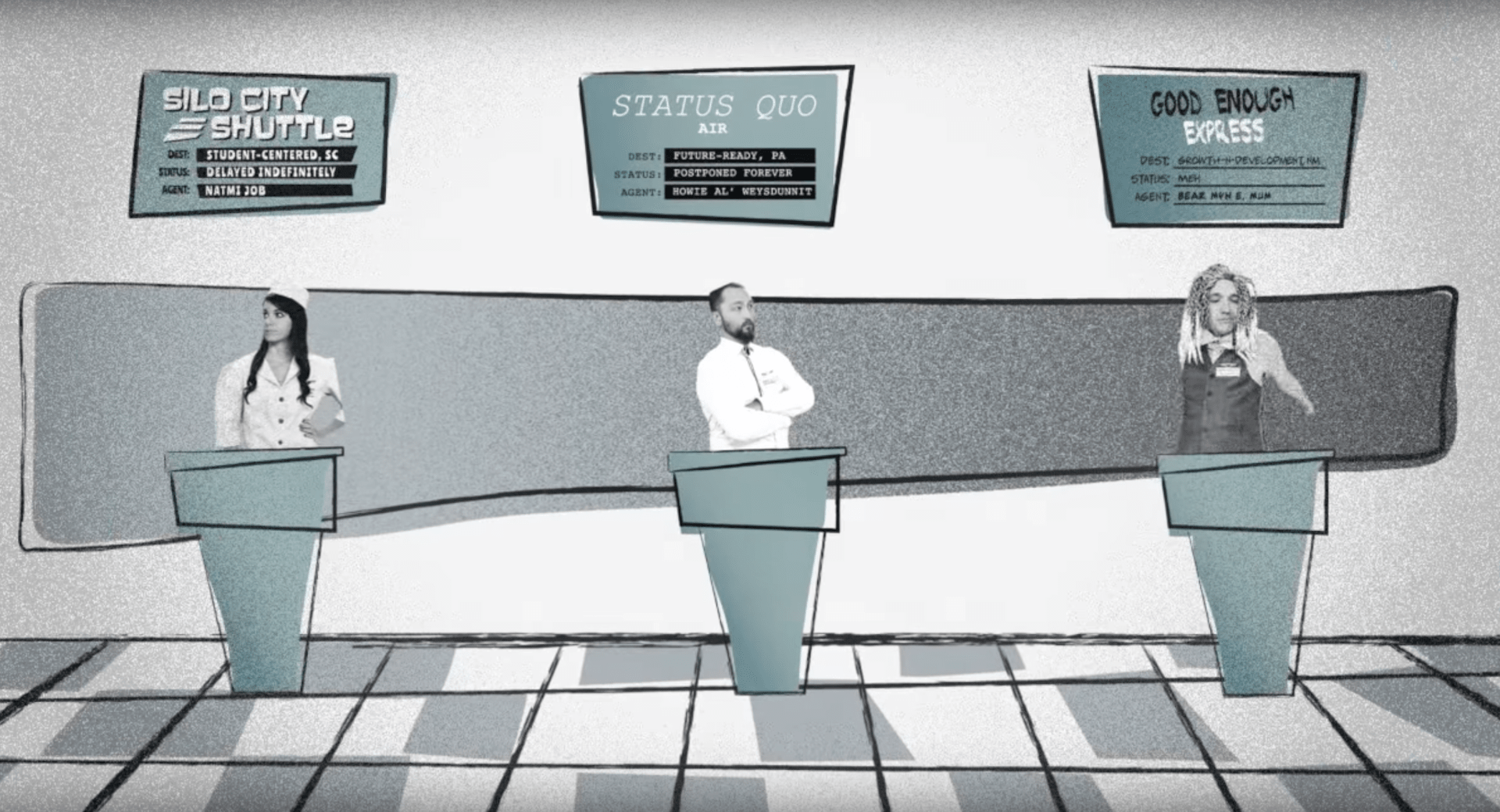
When your relationship with a software provider starts to sour, is it worth the effort to work toward reconciliation, or is there something to be said for just breaking it off?
There’s usually a case to be made for both approaches. The ability to differentiate salvageable partnerships from those beyond repair can be a valuable skill for any district technology leader, as the wrong decision often leads to headaches, hassle, and wasted opportunity cost.
These three common scenarios can make or break an edtech bond, depending on how they’re handled.
1) You are only using a fraction of the available features
Breakup potential: Low
How you got here
Your district has likely partnered with this vendor for many years (or even decades). Nobody is left from the initial implementation and system responsibilities are cordoned off into silos, with nobody accountable for the big picture.You hear other districts talk about features you didn’t even know existed, but you don’t have a clear idea of what you own, how much each piece of it costs, or what you need to do to turn things around. People may like certain parts of the system, but your annual fees don’t align with the usage you’re seeing across the district.
First steps toward reconciliation
- Collect feedback from every group of stakeholders.
- Compile a comprehensive list of pain points, wish list items, and functionality gaps.
- Schedule an extended meeting (preferably in person) with your sales representative.
- Make it clear to your rep that all options are on the table.
- Follow up with a detailed email outlining your concerns and the steps you would like the vendor to help with.
- Remember, both parties shoulder some of the blame—this is the time for compromise.
Cost considerations
Depending on how long your district has been out of touch with the vendor, reconciliation can come at a cost, ranging from consultation to new licenses for beneficial features that may not have existed when you first came on board. When weighed against the price tag of starting from scratch, this “reinvestment” will most likely be a more economical solution.It’s time to break up when:
- Your vendor does not intend to develop the product any further.
- Your vendor seems disinterested in keeping your business or following up on your requests.
- The available features are no longer aligned with your needs as a district.
2) End users are not comfortable with even the most basic functionality
Breakup potential: Lukewarm
How you got here
There are many ways to reach this unenviable destination in an edtech partnership. Maybe your vendor’s training plan relies too heavily on direct instruction and the staff who received training have either moved on or failed to retain what they learned. Maybe your district did not assign accountability for training and ongoing development during your initial implementation, resulting in alarmingly low knowledge levels since the day you rolled it out. Or maybe this is another result of the passage of time rendering old skills obsolete and bare minimum knowledge being passed on based on what people needed to know to do their jobs.As it stands, power users are scarce and the average stakeholder is overwhelmed. You need to turn things around with a user base that’s already unhappy and almost no buy-in. “Daunting” is the word you’re looking for in this scenario.
First steps toward reconciliation
- Identify, document, and prioritize areas of concern based on frequently asked questions, repeat training purchases, and stakeholder feedback.
- Communicate the problem to the vendor’s support team and/or your sales rep.
- Familiarize yourself with any vendor-offered training resources, support, and documentation.
- Designate one person (or up to a small team, depending on district size) to be accountable for the assignment and communication of training and professional development.
- If you need a stopgap due to turnover or the start of a new year, discuss vendor-led training options with your sales rep. This should be seen as a last resort—without intentional process changes, you’ll find yourself in the same situation sooner rather than later.
Cost considerations
This is where effective leadership can have the biggest impact on a district’s bottom line. Many ongoing training and professional development opportunities are either free or available for a minimal subscription cost. These self-paced, just-in-time options don’t just happen, they require significant coordination, accountability, and follow-up. When compared to the cost of recurring vendor-led instruction (on-site or remote), however, both the direct and indirect benefits are readily apparent.It’s time to break up when:
- Your vendor offers group training at a cost, but no self-paced, individual professional development opportunities.
- You have no user groups or conferences in your area.
- You realize transparency is and always will be low on the vendor’s priority list.
3) Your support has taken a back seat to the vendor’s growth
Breakup potential: High
How you got here
Who knows? You signed up for a partnership, and maybe that’s what you got for a few years, but now when you need help it takes days for anyone to respond to you, assuming it happens at all. You either don’t know who your sales rep is, or you can’t get him or her to give you the time of day when you want to have a serious, collaborative discussion.First steps toward reconciliation
- Document every service call/support ticket, every email, and every unresolved issue. These conversations are always easier when you can point to tangible examples.
- Escalate your concern until you’ve exhausted the company’s org chart. Share those examples and make it clear that you are actively looking at other solutions.
- Actively look at other solutions. You may need a backup plan sooner than you think.
Cost considerations
The most advanced technology in the world is not worth these headaches. If the threat of leaving drives the company to open up lines of communication and take action, it might be worth your time to hold steady on a probationary basis. Most of the time, any positive gains will be short-lived. This is a corporate culture issue, and those don’t go away overnight.It’s time to break up when:
- The technology becomes more trouble than it’s worth.
Rediscovering your partnership
The goal when you sign on with a new technology company should always be consistently positive experiences. And yet, for whatever reason, those mutually beneficial partnerships can be hard to come by. Time, knowledge, and transparency are typically at the heart of every edtech relationship, and each has the potential to initiate a downward spiral without proper care. When that happens, the thought of starting over from a clean slate can be appealing, but it’s not always the most advantageous option.The most effective district technology leaders know how to tell the difference between a rocky patch in a relationship and a pairing doomed for failure. Will you?
Follow-up resource: Moving on from specifications
Fore more on what separates the long-term vendor partner from the flash-in-the-pan startup, read EdTech Battle Lines: Specs vs. UX.WHAT'S NEXT FOR YOUR EDTECH? The right combo of tools & support retains staff and serves students better. We'd love to help. Visit skyward.com/get-started to learn more.

|
Erin Werra Blogger, Researcher, and Edvocate |
Erin Werra is a content writer and strategist at Skyward’s Advancing K12 blog. Her writing about K12 edtech, data, security, social-emotional learning, and leadership has appeared in THE Journal, District Administration, eSchool News, and more. She enjoys puzzling over details to make K12 edtech info accessible for all. Outside of edtech, she’s waxing poetic about motherhood, personality traits, and self-growth.




